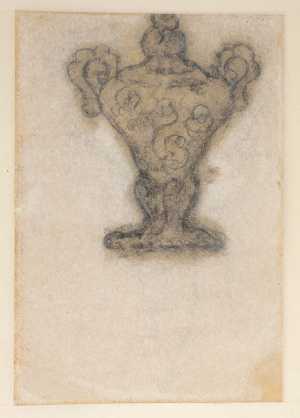Aristide Maillol, one of the most important early 20th-century sculptors, owes his fame to twenty-three monumental sculptures of women. ‘La Méditerranée’, of which the museum has a bronze version, is the earliest of these. Although Rodin was an important mentor for him, Maillol rebelled against his style, which he perceived as too realistic. For Maillol, the body was primarily a vehicle for his quest for ideal, timeless forms.
The son of a winegrower and a textile merchant, Maillol was born in the French fishing village of Banyuls-sur-mer, at the foot of the Pyrenees. At the age of twenty-one he moved to Paris, where he began his studies at the prestigious École des Beaux Arts and became apprenticed to Alexandre Cabanel (1823-1889), whose classical paintings exemplified the taste of the Paris Salon of the time. Maillol had little enthusiasm for the academic style, but was drawn to the paintings of Paul Gauguin (1848-1903).
Inspired by the colourful, stylised compositions of Gauguin and the group of painters around him, Maillol began to design tapestries. He exhibited them regularly and in 1893 opened his own tapestry workshop. Not much later, he began making small sculptures from wood and terracotta. After recovering from an eye disease that left him without sight for several months, he was no longer able to perform the precision work that weaving demanded.
Maillol now focussed exclusively on sculpture. In 1902, the art dealer Ambroise Vollard discovered his small ceramic figures. He had thirty-three pieces cast in bronze and organised a solo exhibition that aroused interest in Parisian art circles. Auguste Rodin (1840-1917), the undisputed master of sculpture at the time, purchased a work and encouraged Maillol to develop further. Maillol’s breakthrough as a sculptor came three years later, in 1905, when he exhibited the first plaster version of ‘La Méditerranée’ at the prestigious Salon d’Automne.
The main subject of Maillol’s sculptural oeuvre is the female body. His monumental nudes have solid bodies with voluminous rounded forms. The sculptures are not realistic: his women are not individuals, they have no personality, they are not in a specific situation and do not express emotions such as fear, anger, joy or sorrow. They are idealised archetypes of the female form. ‘I am not interested in particulars; what interests me is the general idea’, said the artist. He found an exemplar in the sculpture of the ancient Greeks, whose idealised human figures exuded timeless values for him.
His pursuit of the perfect distillation of the female form led Maillol to emphasise harmony, balance and serene postures with simplified body shapes. Anatomical accuracy was of secondary importance. The bodies are made up of basic building blocks, with limbs reduced to geometric shapes. With this emphasis on form and geometry over naturalistic representation, Maillol paved the way for later abstract sculptors such as Constantin Brâncuși (1876-1957) and Jean (Hans) Arp (1888-1966).

Aristide Maillol
Banyuls-sur-Mer 1861 - Banyuls-sur-Mer 1944

















